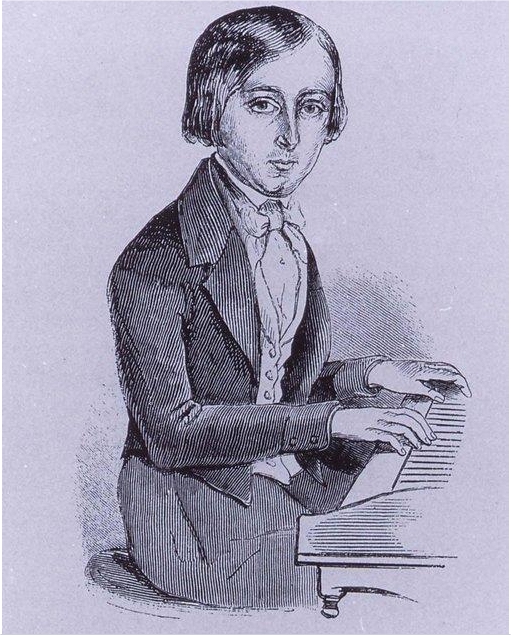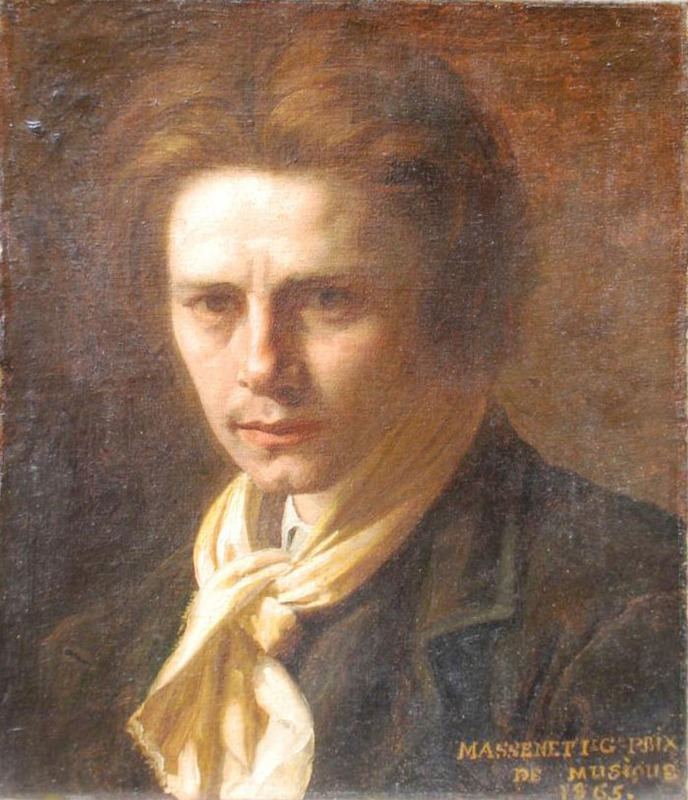|
Louis Diémer
Louis Joseph Diémer (14 February 1843 – 21 December 1919) was a French pianist and composer. He was the founder of the Société des Instruments Anciens in the 1890s, and also gave recitals on the harpsichord. His output as a composer was extensive, including a piano concerto and a quantity of salon music, salon pieces. Life Diémer was born and died in Paris. He studied at the Conservatoire de Paris, Paris Conservatoire, where his teachers included Ambroise Thomas for composition, Antoine François Marmontel, Antoine Marmontel for piano, and François Benoist for organ. From the age of twelve, he won several first prizes (''Premiers Prix'') at the Conservatoire, in piano, harmony and accompaniment, counterpoint and fugue, and solfège, and a ''second prix'' in organ. He quickly built a reputation as a virtuoso and toured with, among others, the violinists Delphin Alard and Pablo de Sarasate. In 1888, Diémer succeeded Marmontel as professor of piano at the Paris Conservatory. ... [...More Info...] [...Related Items...] OR: [Wikipedia] [Google] [Baidu] |
Louis Diémer By Étienne Carjat C1860s
Louis may refer to: People * Louis (given name), origin and several individuals with this name * Louis (surname) * Louis (singer), Serbian singer Other uses * Louis (coin), a French coin * HMS Louis, HMS ''Louis'', two ships of the Royal Navy See also * Derived terms * King Louis (other) * Saint Louis (other) * Louis Cruise Lines * Louis dressing, for salad * Louis Quinze, design style Associated terms * Lewis (other) * Louie (other) * Luis (other) * Louise (other) * Louisville (other) Associated names * * Chlodwig, the origin of the name Ludwig, which is translated to English as "Louis" * Ladislav and László - names sometimes erroneously associated with "Louis" * Ludovic, Ludwig (other), Ludwig, Ludwick, Ludwik, names sometimes translated to English as "Louis" {{disambiguation ... [...More Info...] [...Related Items...] OR: [Wikipedia] [Google] [Baidu] |
Robert Lortat
Robert Lortat (12 September 1885 – 5 May 1938) was a French pianist, well known in his native Paris and in other musical centres including London. He was closely associated with the works of Frédéric Chopin and Gabriel Fauré. Ill health caused by German gas during the First World War restricted his post-war career and led to his early death at the age of 52. Life and career Lortat was born in the 17th arrondissement of Paris on 12 September 1885."Robert Lortat" Bibliothèque nationale de France. Retrieved 28 February 2021 He studied at the Paris Conservatoire under , whose other students inclu ... [...More Info...] [...Related Items...] OR: [Wikipedia] [Google] [Baidu] |
Phonograph
A phonograph, later called a gramophone, and since the 1940s a record player, or more recently a turntable, is a device for the mechanical and analogue reproduction of sound. The sound vibration Waveform, waveforms are recorded as corresponding physical deviations of a helical or spiral groove engraved, etched, incised, or impressed into the surface of a rotating cylinder or disc, called a ''Phonograph record, record''. To recreate the sound, the surface is similarly rotated while a playback #Stylus, stylus traces the groove and is therefore vibrated by it, faintly reproducing the recorded sound. In early acoustic phonographs, the stylus vibrated a Diaphragm (acoustics), diaphragm that produced sound waves coupled to the open air through a flaring Horn loudspeaker, horn, or directly to the listener's ears through stethoscope-type earphones. The phonograph was invented in 1877 by Thomas Edison; its use would rise the following year. Alexander Graham Bell's Volta Laboratory an ... [...More Info...] [...Related Items...] OR: [Wikipedia] [Google] [Baidu] |
Pyotr Ilyich Tchaikovsky
Pyotr Ilyich Tchaikovsky ( ; 7 May 1840 – 6 November 1893) was a Russian composer during the Romantic period. He was the first Russian composer whose music made a lasting impression internationally. Tchaikovsky wrote some of the most popular concert and theatrical music in the classical repertoire, including the ballets '' Swan Lake'' and ''The Nutcracker'', the '' 1812 Overture'', his First Piano Concerto, Violin Concerto, the ''Romeo and Juliet'' Overture-Fantasy, several symphonies, and the opera ''Eugene Onegin''. Although musically precocious, Tchaikovsky was educated for a career as a civil servant as there was little opportunity for a musical career in Russia at the time and no public music education system. When an opportunity for such an education arose, he entered the nascent Saint Petersburg Conservatory, from which he graduated in 1865. The formal Western-oriented teaching Tchaikovsky received there set him apart from composers of the contemporary nationalist ... [...More Info...] [...Related Items...] OR: [Wikipedia] [Google] [Baidu] |
Édouard Lalo
Édouard-Victoire-Antoine Lalo (27 January 182322 April 1892) was a French composer, violist, violinist, and academic teacher. His most celebrated piece is the '' Symphonie Espagnole'', a five-movement concerto for violin and orchestra that remains a popular work in the standard repertoire. Biography Lalo was born in Lille, in the northernmost part of France. He attended the conservatoire in that city in his youth. Beginning at age 16, he studied at the Paris conservatoire under François Antoine Habeneck. Habeneck conducted student concerts at the conservatoire from 1806 and became the founding conductor of the Orchestre de la Société des Concerts du Conservatoire in 1828. For several years, Lalo worked as a string player and teacher in Paris. In 1848, he joined with friends to found the Armingaud Quartet, in which he played the viola and later, second violin. His earliest surviving compositions are songs and chamber works. Two early symphonies were destroyed. In 1865 ... [...More Info...] [...Related Items...] OR: [Wikipedia] [Google] [Baidu] |
Piano Concerto No
A piano is a keyboard instrument that produces sound when its keys are depressed, activating an action mechanism where hammers strike strings. Modern pianos have a row of 88 black and white keys, tuned to a chromatic scale in equal temperament. A musician who specializes in piano is called a pianist. There are two main types of piano: the grand piano and the upright piano. The grand piano offers better sound and more precise key control, making it the preferred choice when space and budget allow. The grand piano is also considered a necessity in venues hosting skilled pianists. The upright piano is more commonly used because of its smaller size and lower cost. When a key is depressed, the strings inside are struck by felt-coated wooden hammers. The vibrations are transmitted through a bridge to a soundboard that amplifies the sound by coupling the acoustic energy to the air. When the key is released, a damper stops the string's vibration, ending the sound. Most not ... [...More Info...] [...Related Items...] OR: [Wikipedia] [Google] [Baidu] |
Camille Saint-Saëns
Charles-Camille Saint-Saëns (, , 9October 183516 December 1921) was a French composer, organist, conductor and pianist of the Romantic music, Romantic era. His best-known works include Introduction and Rondo Capriccioso (1863), the Piano Concerto No. 2 (Saint-Saëns), Second Piano Concerto (1868), the Cello Concerto No. 1 (Saint-Saëns), First Cello Concerto (1872), ''Danse macabre (Saint-Saëns), Danse macabre'' (1874), the opera ''Samson and Delilah (opera), Samson and Delilah'' (1877), the Violin Concerto No. 3 (Saint-Saëns), Third Violin Concerto (1880), the Symphony No. 3 (Saint-Saëns), Third ("Organ") Symphony (1886) and ''The Carnival of the Animals'' (1886). Saint-Saëns was a musical prodigy; he made his concert debut at the age of ten. After studying at the Paris Conservatoire he followed a conventional career as a church organist, first at Saint-Merri, Paris and, from 1858, La Madeleine, Paris, La Madeleine, the official church of the Second French Empire, Fr ... [...More Info...] [...Related Items...] OR: [Wikipedia] [Google] [Baidu] |
Piano Concerto (Massenet)
Jules Massenet's Piano Concerto is a 1902 work for piano solo and orchestra. It is scored for a typical-sized ensemble of the time. The concerto was performed in 1903 by Louis Diémer at the Conservatoire de Paris. After the premiere, it quickly fell into obscurity and is seldom heard today. Composition In 1863, Massenet won the Prix de Rome as a composer, and moved to Rome. He remarked to his sister, "I am working more at the piano. I’m studying Chopin's Études (Chopin), Études, but especially Ludwig van Beethoven, Beethoven and Johann Sebastian Bach, Bach as the true musician-pianist". That year, he began sketches for his Piano Concerto. The work was not completed until 1902, when Massenet was nearing the age of sixty. In a period of three months, Massenet completed the piano concerto. Premiere The world premiere of this work occurred on 1 February 1903 at the Paris Conservatoire. The sixty-year-old Louis Diémer, to whom the work was dedicated, was the soloist for the pr ... [...More Info...] [...Related Items...] OR: [Wikipedia] [Google] [Baidu] |
Jules Massenet
Jules Émile Frédéric Massenet (; 12 May 1842 – 13 August 1912) was a French composer of the Romantic music, Romantic era best known for his operas, of which he wrote more than thirty. The two most frequently staged are ''Manon'' (1884) and ''Werther'' (1892). He also composed oratorios, ballets, orchestral works, incidental music, piano pieces, songs and other music. While still a schoolboy, Massenet was admitted to France's principal music college, the Paris Conservatoire. There he studied under Ambroise Thomas, whom he greatly admired. After winning the country's top musical prize, the , in 1863, he composed prolifically in many genres, but quickly became best known for his operas. Between 1867 and his death forty-five years later he wrote more than forty stage works in a wide variety of styles, from opéra-comique to grand-scale depictions of classical myths, romantic comedies, Drame lyrique, lyric dramas, as well as oratorios, cantatas and ballets. Massenet had a g ... [...More Info...] [...Related Items...] OR: [Wikipedia] [Google] [Baidu] |
Symphonic Variations (Franck)
The ''Symphonic Variations'' (''Variations symphoniques''), M. 46, is a work for piano and orchestra written in 1885 by César Franck. It has been described as "one of Franck's tightest and most finished works", "a superb blending of piano and orchestra", and "a flawless work and as near perfection as a human composer can hope to get in a work of this nature". It is a fine example of Franck's use of cyclic unity, with one theme growing into various others. The piano and orchestra share equally in the development of ideas. The work is in F minor (with the last movement in F major). Duration in performance is about fifteen minutes, and the instrumentation is piano solo and orchestra: pairs of flutes, oboes, clarinets, and bassoons; four horns; two trumpets; timpani; and strings. History The work was dedicated to Louis Diémer, who on 15 March 1885 had premiered '' Les Djinns'', a symphonic poem for piano and orchestra that brought Franck one of his rare critical successes. ... [...More Info...] [...Related Items...] OR: [Wikipedia] [Google] [Baidu] |
César Franck
César Auguste Jean Guillaume Hubert Franck (; 10 December 1822 – 8 November 1890) was a French Romantic music, Romantic composer, pianist, organist, and music teacher born in present-day Belgium. He was born in Liège (which at the time of his birth was part of the United Kingdom of the Netherlands). He gave his first concerts there in 1834 and studied privately in Paris from 1835, where his teachers included Anton Reicha. After a brief return to Belgium, and a disastrous reception of an early oratorio ''Ruth'', he moved to Paris, where he married and embarked on a career as teacher and organist. He gained a reputation as a formidable musical improviser, and travelled widely within France to demonstrate new instruments built by Aristide Cavaillé-Coll. In 1859, he became titular organist at the church Basilica of St. Clotilde, Paris, Sainte-Clotilde, a position he retained for the rest of his life. He became professor at the Conservatoire de Paris, Paris Conservatoire in ... [...More Info...] [...Related Items...] OR: [Wikipedia] [Google] [Baidu] |






